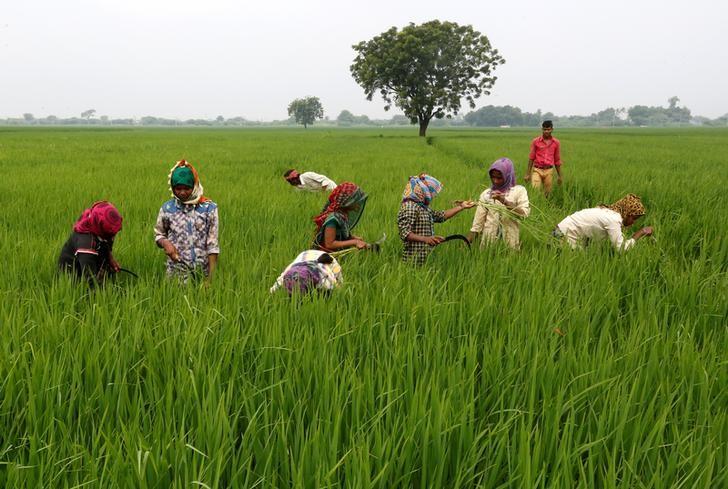With the monsoon rains expected to be normal this year, the government aims to increase India's foodgrain output by over 2 per cent to a record 283.7 million tonnes, in the 2018-19 crop year (July-June). The target would remain effective for the ongoing kharif cropping season and could also be revised later.
Addressing the annual kharif conference, agriculture commissioner, S.K. Malhotra, said while the India Meteorological Department (IMD) has predicted the monsoon to be normal this year, a Japanese weather research body has forecasted it to be above normal. “If it happens, it will definitely boost production,” he said.
Agriculture minister Radha Mohan Singh said since the government has moved from production-centric to income-oriented approach for farmers, the government would soon take a decision on schemes which would ensure farmers get the government announced minimum support prices (MSPs) for their produce.
In the Union budget this year, finance minister Arun Jaitley had said that the government would fix the MSPs of all major kharif crops at 50 per cent over cost of production. Paddy, pulses, oilseeds and vegetables are the key crops grown in the country during the four-month long Sorthwest monsoon season in India.
The IMD has predicted this year’s southwest monsoon (June-September) to be ‘normal’, at 97 per cent of the long-period average (LPA) of 89 cm, with a margin of error of +/- 5 per cent. It has lined up five probable scenarios — a normal monsoon (42 per cent), below normal (30 per cent), deficient (14 per cent), above normal (12 per cent) and excess (2 per cent).
With this forecast of near-normal to normal monsoon, it would be two successive years of normal rains, after two successive years of drought.
In 2017, the country had received 95 per cent monsoon rainfall and still the foodgrains production was a record of 281.7 million tonne, as per government estimate. Which is probably also the reason as to why the government fixed a higher target for the upcoming crop year.
India aims to achieve 141.2 million tonne foodgrains output during kharif and 142.5 million tonne in rabi during 2018-19. Production target for paddy, the chief kharif crop, next year, has been set at record 113 million tonne. This includes 98 million tonne from kharif season and 15 million tonne in rabi. India is estimated to have produced 111.01 million tonne rice in 2017-18, government data showed.
The target for pulses has been fixed at 24 million tonne, against estimated production of 23.95 million tonne in 2017-18. The same level of production target for pulses could be due to lower market prices for the crops like tur, moong, urad, masur and chana. In many places, the mandi prices of pulses are 20-25 per cent lower than their MSPs.
Coarse cereals, comprising maize, jowar, bajra, barley and other millets are targetted at 46.7 million tonne against their estimated output of 45.42 million tonne this year. Cotton production target has been fixed at 35.5 million bales (of 170 kg each) compared to 33.91 million bales in 2017-18.
Malhotra said there has been a thrust on raising oilseeds production in the country since most of the edible oil demand is met through import. The oilseeds production target has been fixed at 36 million tonne for 2018-19 while the estimated output was 29.9 million tonne this year.
He appealed states to promote oilseeds through inter-cropping with pulses, cotton and coarse cereals. The states of Bihar, Jharkhand and Odisha have been asked to promote soybean, the major kharif oilseed which is mainly grown in Madhya Pradesh, Maharashtra and Rajasthan.


